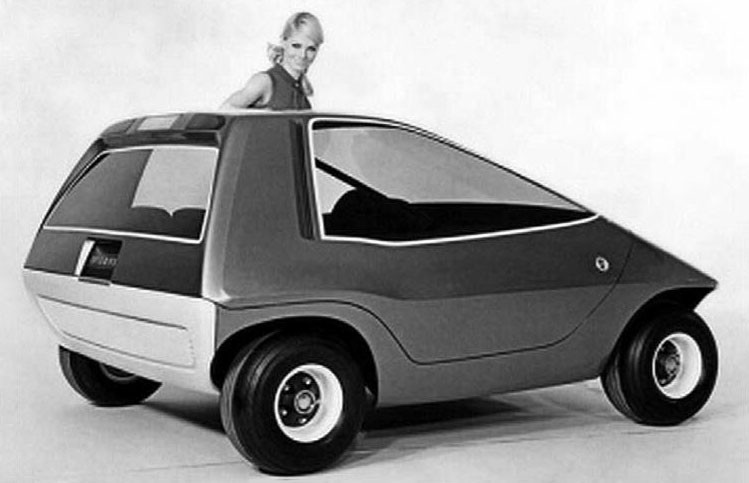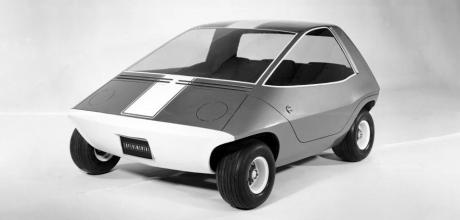1967 AMC Amitron/Electron
Electric cars may be all the rage at the moment, but the American car industry had a fair few attempts at presenting its vision of how an electric car would look in the Sixties. Richard Heseltine looks at AMC’s offering, the Amitron…
From here to obscurity
Richard Heseltine’s weird and wonderful American cars from the past.
Unveiled in a Detroit hotel conference room in December 1967, the Amitron may have been on the small side, but you could argue that it cast a long shadow. Designed under AMC styling czar, Dick Teague, this minuscule electric car was built in conjunction with battery manufacturer, Gulton Industries of Metuchen, New Jersey. Barely 2159mm (85in) long, 1765mm (69.5in) wide and 1168mm (46in) high, it boasted three abreast seating but, according to marketing material of the time, weighed in at just 499kg (1100lb).

Despite its stubby proportions, the Amitron was relatively practical for its size. Novel features included inflatable seat cushions: the passenger cushions could be deflated when driving solo so as to free up storage space. AMC claimed it had a range of 241km and could cruise at 50mph, having taken 20 seconds to get there. It also boasted regenerative braking which is now a standard feature of hybrids and EVs but was then practically unheard of anywhere in the world. This was unquestionably the first time it had been trialled on an American car.
This being a concept car of the Sixties, the Amitron didn’t feature anything so conventional as doors. Instead, you entered and exited the cabin with its three abreast seating arrangement via a one-piece, clamshell-like canopy. It became a media darling, too, and not just in the US. It was a cover star the world over and made umpteen media appearances elsewhere. There was even talk of variations on the theme entering production.
Amitron weighed less than 500kg!
There were, however, a few barriers to it making the leap from prototype to manufacture. First of all, with fuel still costing relatively little stateside (relative to the rest of the world), AMC’s management concluded that there would be insufficient demand on the home front. There were also serious doubts from some quarters that the technology was anything like ready to be rolled out in the real world. Some reckoned it was at least a decade away from being tested sufficiently to make sense. It has also been suggested in some texts that the Amitron wouldn’t have passed crash tests without major revisions.
Nevertheless, the design influenced the Pacer production car, not least its seating arrangement. What’s more, the styling still looked remarkably fresh a decade later. This point clearly wasn’t lost on AMC. Following the 1973 Oil Shock, small cars rapidly took on greater relevance in North America. And how. The Amitron was dusted down, repainted, and given a pair of exterior mirrors before being presented as the Electron in 1977 as part of the firm’s ‘Concept 80’ series of experimental prototypes that included the AM Van, Grand Touring, Concept I, Concept II and Jeep II.
For better or worse
However, distinct from the car in 1967 guise, here there was no powertrain. Nor was there much by way of description in the PR material. Predictably, there was no talk in this instance of the ‘car’ being anything other than a concept teaser. As to the fate of the prototype, we would love to know. It may have been more micro than muscle car, but this was a typically intriguing AMC design, and one that foretold the future for better or worse. That, after all, is what a concept car is meant to do.


